Creating the Klingons
We now know the Klingons as a people driven by honor and tradition, but they started out as the opposite. The Making of Star Trek, co-authored by Gene Roddenberry while The Original Series was still in production, describes the “number-one adversary of the Federation” as “[m]ore powerful than the Romulans” and “less admirable characters.”
Their only rule of life is that rules are made to be broken by shrewdness, deceit or power. Cruelty is something admirable; honor is a dispicable trait. They will go out of their way to provoke an incident with the Federation.
The Next Generation and Deep Space Nine would reverse the roles, with the Romulans becoming duplicitous and never striking the first blow.
The Original Series
The Making of Star Trek goes on to describe the Klingon Empire as an “absolute dictatorship” where assassination is common:
Their society is totally devoted to personal gain by the cleverest, strongest or most treacherous. As a result, their vessels often operate much like “privateers” and warlike acts are a way of life. Life on all levels is completely supervised and extensive use is made of “snooping devices” to help maintain total control.
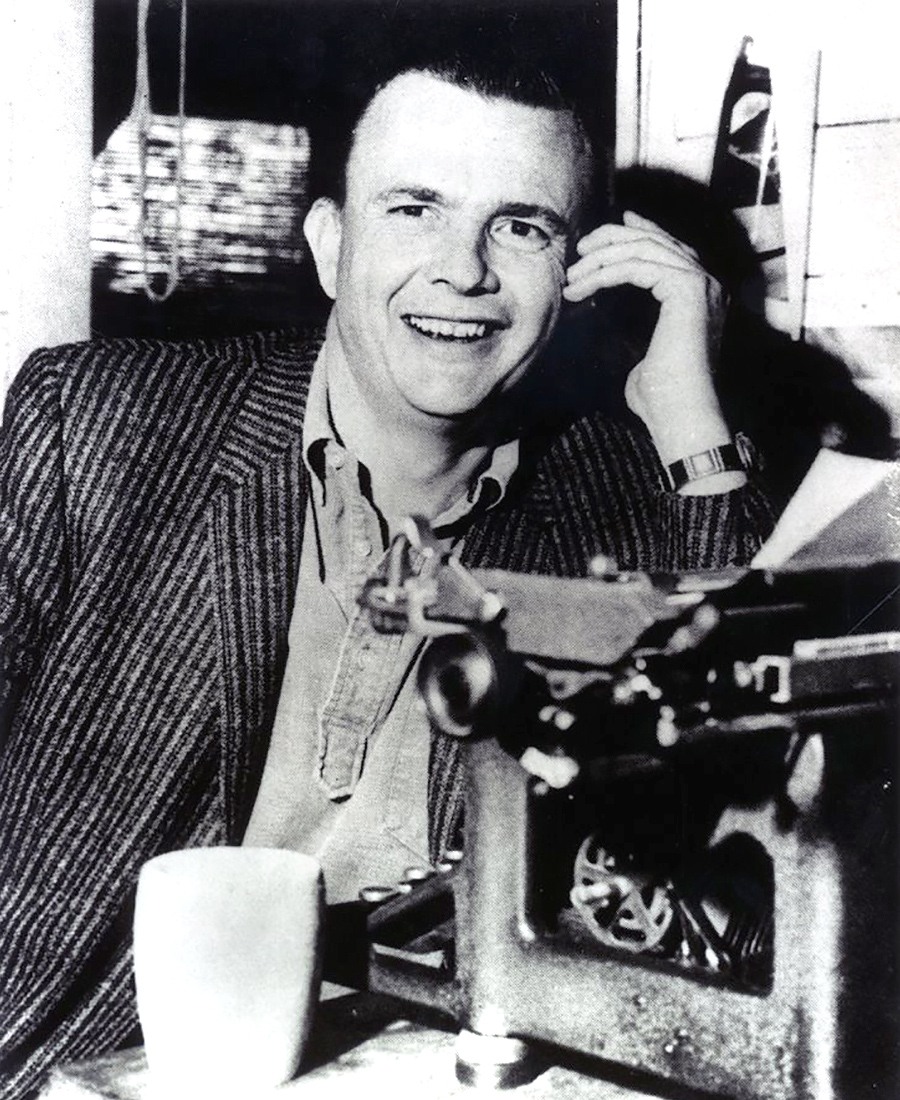
Gene Coon, who wrote the episode “Errand of Mercy” in which the Klingons first appeared, deliberately modeled the species on America’s communist rivals in the Cold War: primarily Russia, to a lesser extent China. Much like the proxy wars of the twentiethe century, the Federation and the Klingons supported opposing sides in a civil war in “A Private Little War”.
The Klingons were allowed no redeeming qualities. Producer Robert Justman wrote to fellow producer Fred Freiberger at the time “Day of the Dove” was being made:
[L]et us never set up a situation whereby those adversaries of ours give any indication of ever being anything but highly aggressive and self-seeking opponents.
Gene Roddenberry disagreed. During the 1990 SeaTrek cruise, Majel Barrett recalled that her husband “never did like the Klingons, because they were represented as being ‘all bad.’ Gene said, ‘There is no such thing as a whole race that is all bad.’ He really hated that.”
The script of “Errand of Mercy” described the Klingons as “Oriental”-looking. Beyond that, makeup designer Fred Phillips had little to go on. “I had never heard of a Klingon before,” he is quoted as saying in These Are the Voyages: TOS Season One. “And nothing in the script that I read told me what it was.”

John Colicos, the actor who played the Klingon commander Kor in “Errand of Mercy”, had a significant influence on the makeup design. He proposed to take inspiration from Genghis Khan, another ambitious military commander, and Dr Fu Manchu. Phillips “thought that was a hell of a good idea,” Colicos told Star Trek: Communicator in 1995.
The look took only about 20 minutes to apply, according to Colicos, and it was relatively cheap. As a result, the Klingons replaced the Romulans as Star Trek’s favorite villains.
Phase II

For the aborted Star Trek television series Phase II, John Meredyth Lucas wrote a two-part episode “Kitumba” that would have radically changed Klingon culture and society.
Lucas, who had produced half of the second season of The Original Series, borrowed from Japan give the Klingons a god-like ceremonial head of state, called the Kitumba, who resides on a Sacred Planet. Day-to-day authority would rest with a Warlord — analogues to the Japanese shogun — who lives on Ultar, the Klingon home world.
The story would have revealed that only members of the warrior caste are called “Klingons”. They are served by technicians and subjects.
The Next Generation established the existence of a Klingon High Council, chaired by a chancellor. But the emperor returned in “Rightful Heir”, when a Kahless clone is elevated to the long-vacant Klingon throne.
Movie era
Fred Phillips was given the chance to recreate the Klingons for Star Trek: The Motion Picture, which had a much bigger budget, but it was costume designer Robert Fletcher who invented the now-distinctive Klingon cranial ridges.
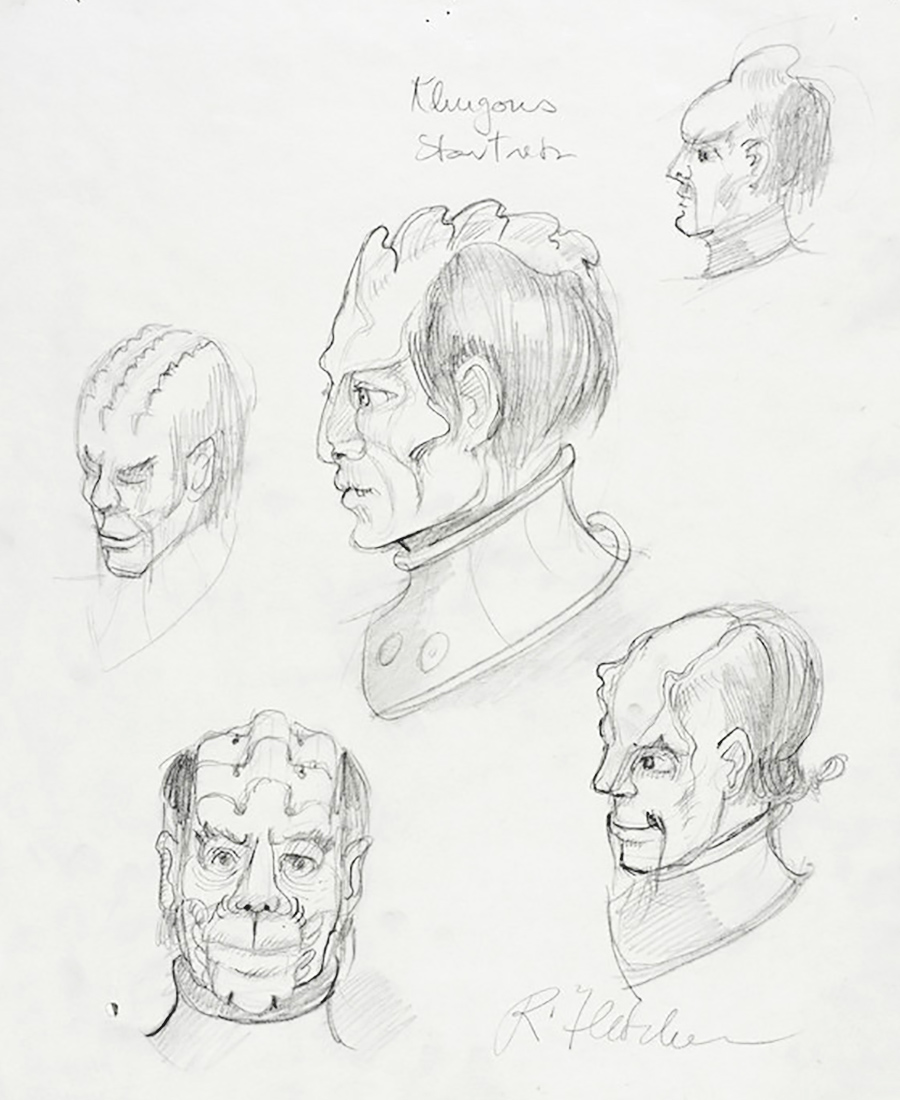
“I did sketches for the Klingon, including the knobby forehead and head,” Fletcher said in an interview for the 2002 DVD of Star Trek III.
The Makeup Department, very generously, said, “That’s great, we’d like to use it.” Gene Roddenberry was not too enthusiastic. He thought they should look more like just people. I said, “Yes, but these are real aliens, and they’re evil aliens.” I think the people, the audience, wants to see something that is not just folks, that goes beyond just folks.
Roddenberry came around and suggested that the cranial ridges might be an outgrow of the Klingon spinal cord, proceeding up the back of the neck and over the head.
Fletcher agreed:
In my mind, all the bumps on the forehead and so forth are vestigial remains of a people that evolved like crustaceans, like lobsters, who have their skeleton on the outside of their bodies.
The makeup went through various iterations. The final product was uncomfortable for the actors to wear. Mark Lenard, who played one of the Klingon commanders in the movie, recalled in an interview with Starlog that the nose piece, which extended down from the upper area of the head piece, over the actor’s nose, was “pretty warm” and itched.
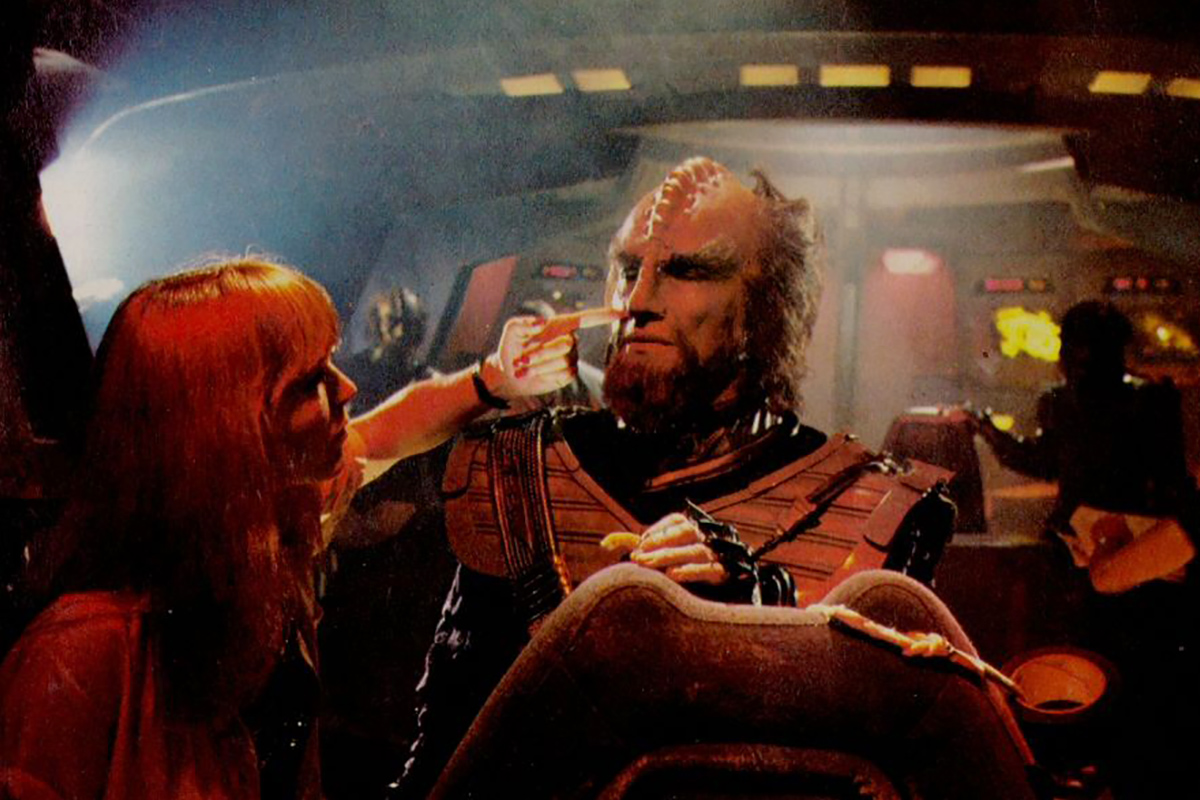
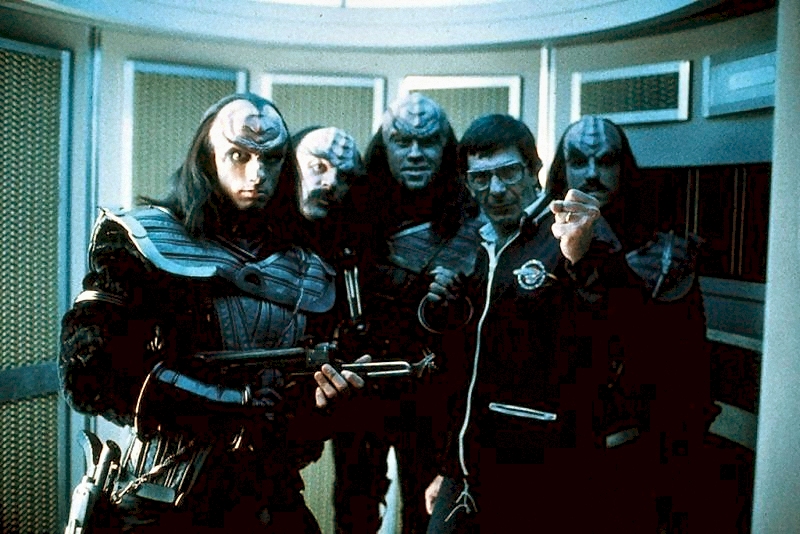

Fletcher refined the Klingon look for Star Trek III, telling Cinefantastique in 1987:
There had never been a good marriage between the forehead appliance and the actors’ faces. We tried to keep them in character rather than have these obstructive things on their heads.
Applying the makeup took two hours per actor each day. By the time of Star Trek IV, John Schuck, who played the Klingon ambassador, spent up to four-and-a-half hours in makeup before shooting.
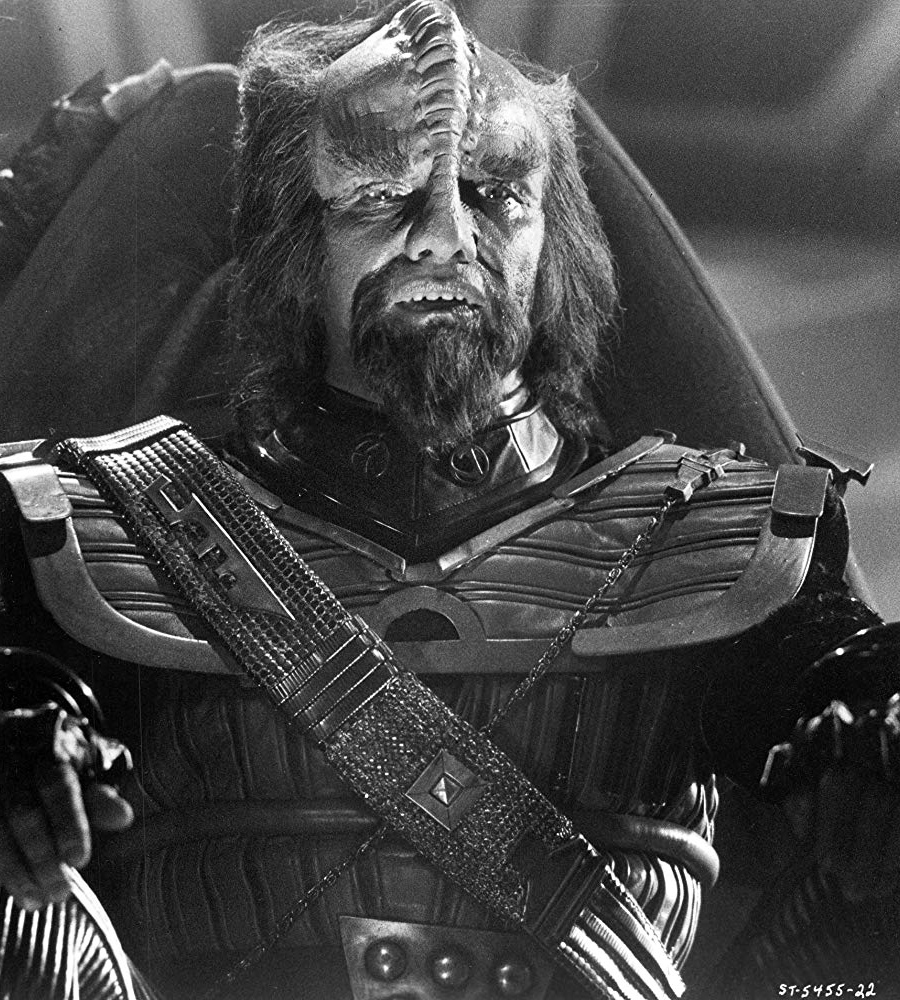

The Klingon costumes were inspired by Japanese culture. Fletcher is quoted in The Making of the Trek Films as saying, “I always liked to think of them as authoritarian, almost feudal, like Japan had been.”

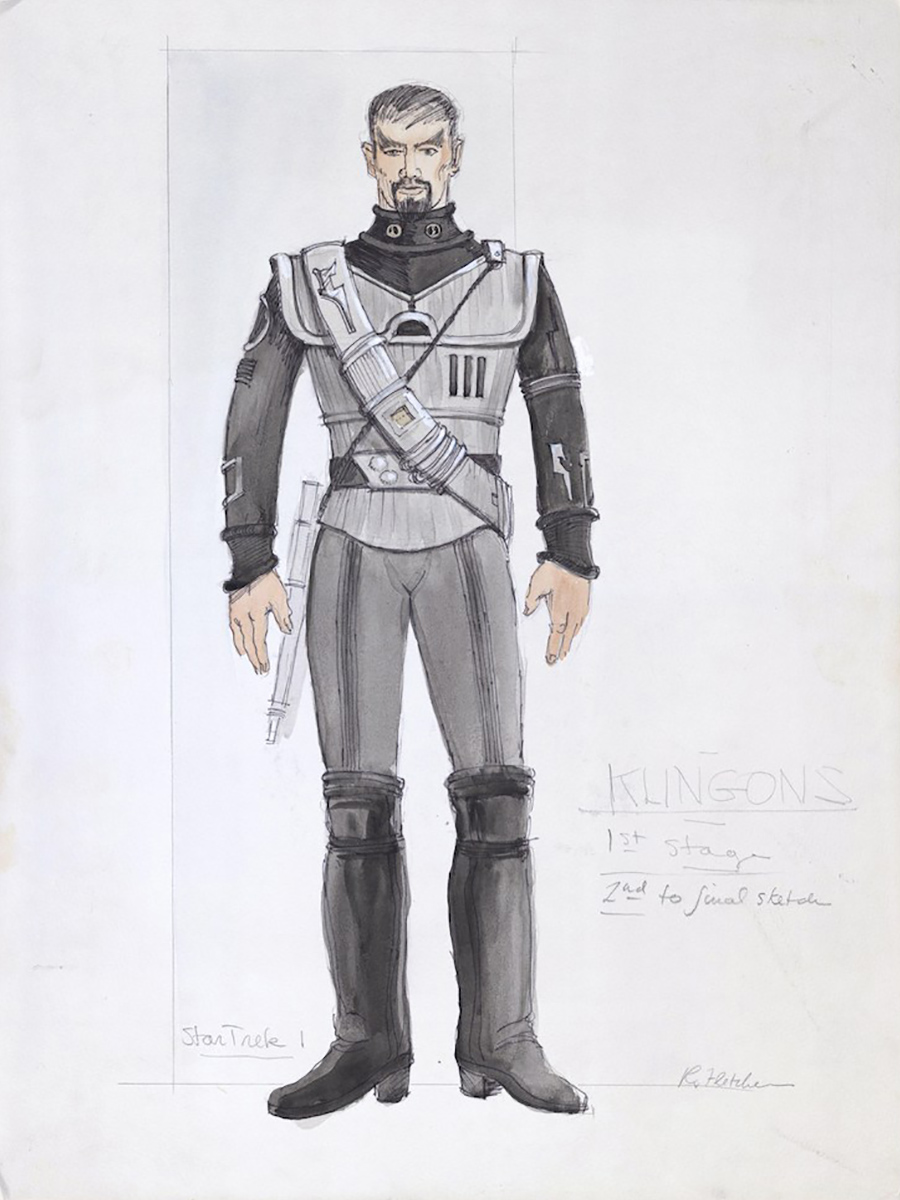
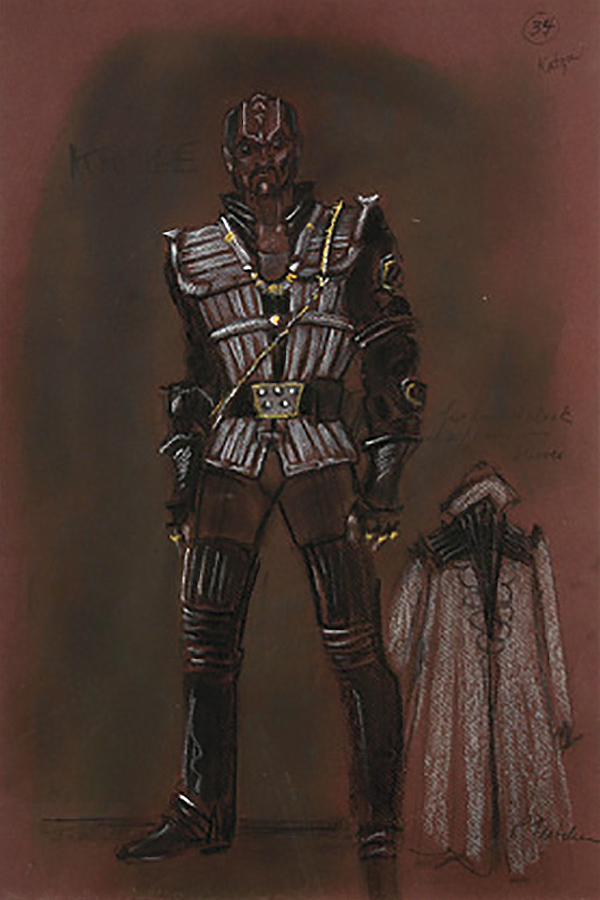
William Campbell, who had played Koloth in “The Trouble with Tribbles”, and who would reprise the role three decades later for the episode “Blood Oath” of Deep Space Nine, said during the 1991 SeaTrek cruise that he had a “difficult time” with the makeup changes:
When they did the first movie, it looked like the Klingons had gone through some metamorphic stage. In the classic series, the Klingons looked like humans. I never understood the reasoning behind the extensive makeup change except for the reason that it is a new show.
Roddenberry and Phillips came up with the explanation that there might be different Klingon races, but this was never mentioned on screen.
The Next Generation
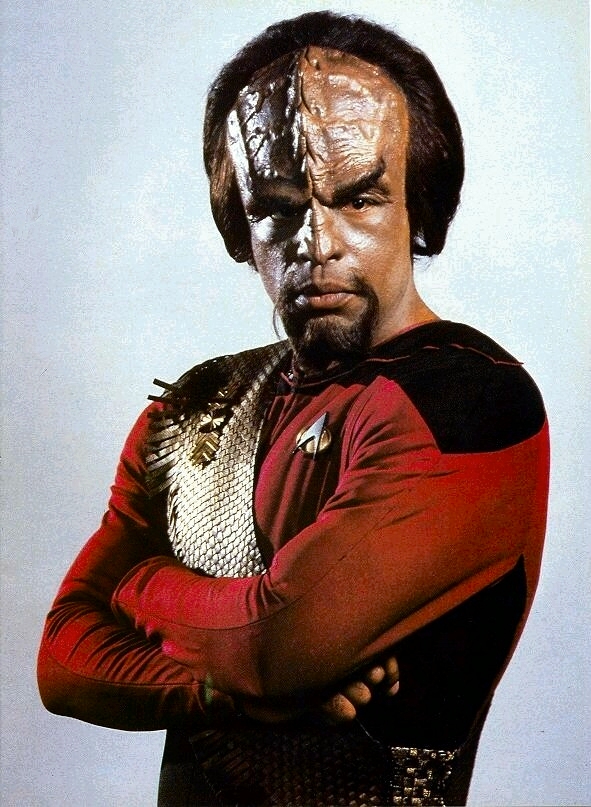
Roddenberry initially wanted no Klingons, nor Romulans, on The Next Generation in order to differentiate it from The Original Series. Writer and Co-Producer Herb Wright claimed credit for softening Roddenberry’s position in an interview with Cinefantastique in 1992, “by squeezing a Klingon on the bridge.”
It was Justman who provided the most persuasive argument: putting a Klingon in Starfleet would be a great way to show that a century had passed since the original show, and that both human and Klingon attitudes had grown.
Dorothy C. Fontana, a veteran writer of the first Star Trek, agreed there would be story opportunities if the second showed the Federation and the Klingons at peace.
Roddenberry relented, which led to the creation of Worf. But he was still adamant that there would be “no stories about warfare with Klingons” on The Next Generation, and that these Klingons should be different.
Michael Dorn, who had watched the original Star Trek growing up, recalled in a 1991 interview with The Official Star Trek: The Next Generation Magazine that Roddenberry told him, “Forget everything you’ve ever read or heard about Klingons.” Klingons would have redeeming qualities after all.

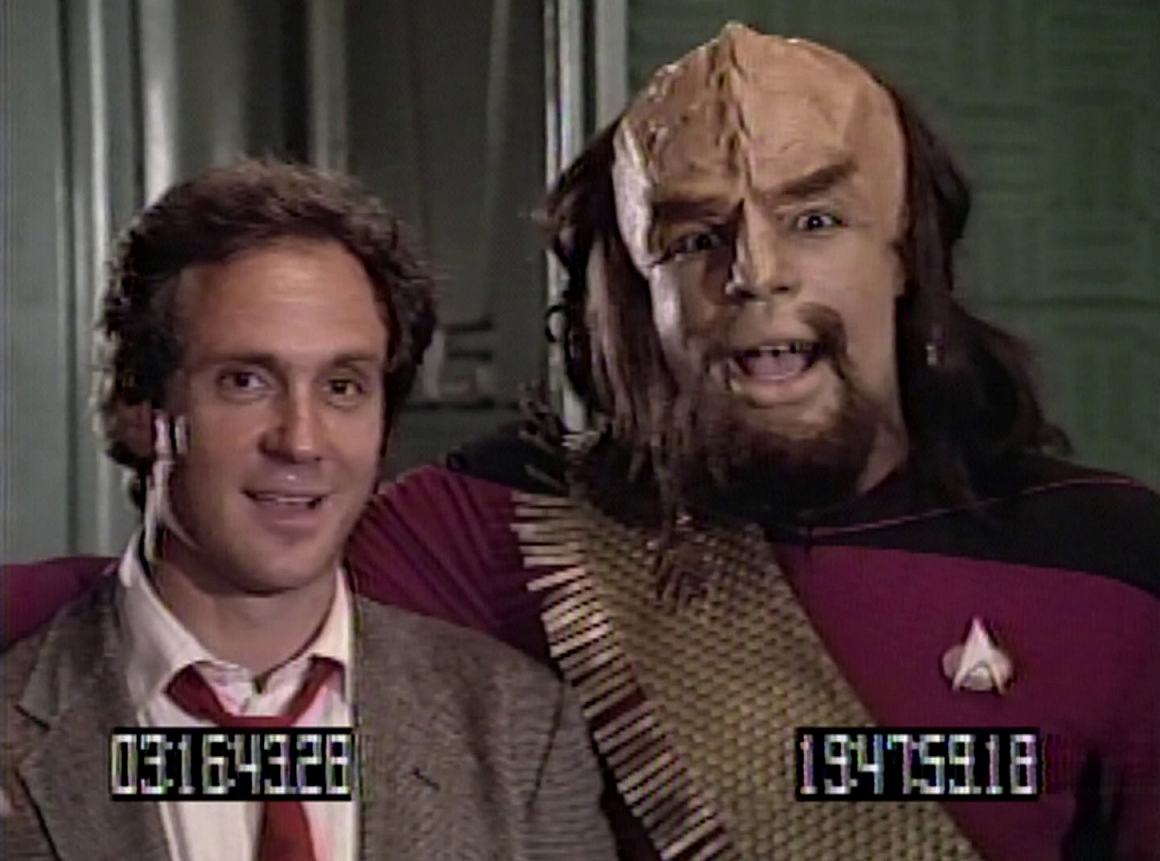
Makeup artist Michael Westmore could borrow from the movies to create Worf’s look. He also wanted to add something of his own, writing in the Star Trek: The Next Generation Makeup FX Journal that he got Roddenberry’s and Producer Rick Berman’s permission “to lend a little more ferocity to their overall appearance.”
Westmore made the forehead ridges more pronounced, so they were more visible on the small television screen. “I took it a step further,” he told Cinefantastique in 1991, “and brought it into their nose area, so it doesn’t just look like a forehead that we’ve added on.”
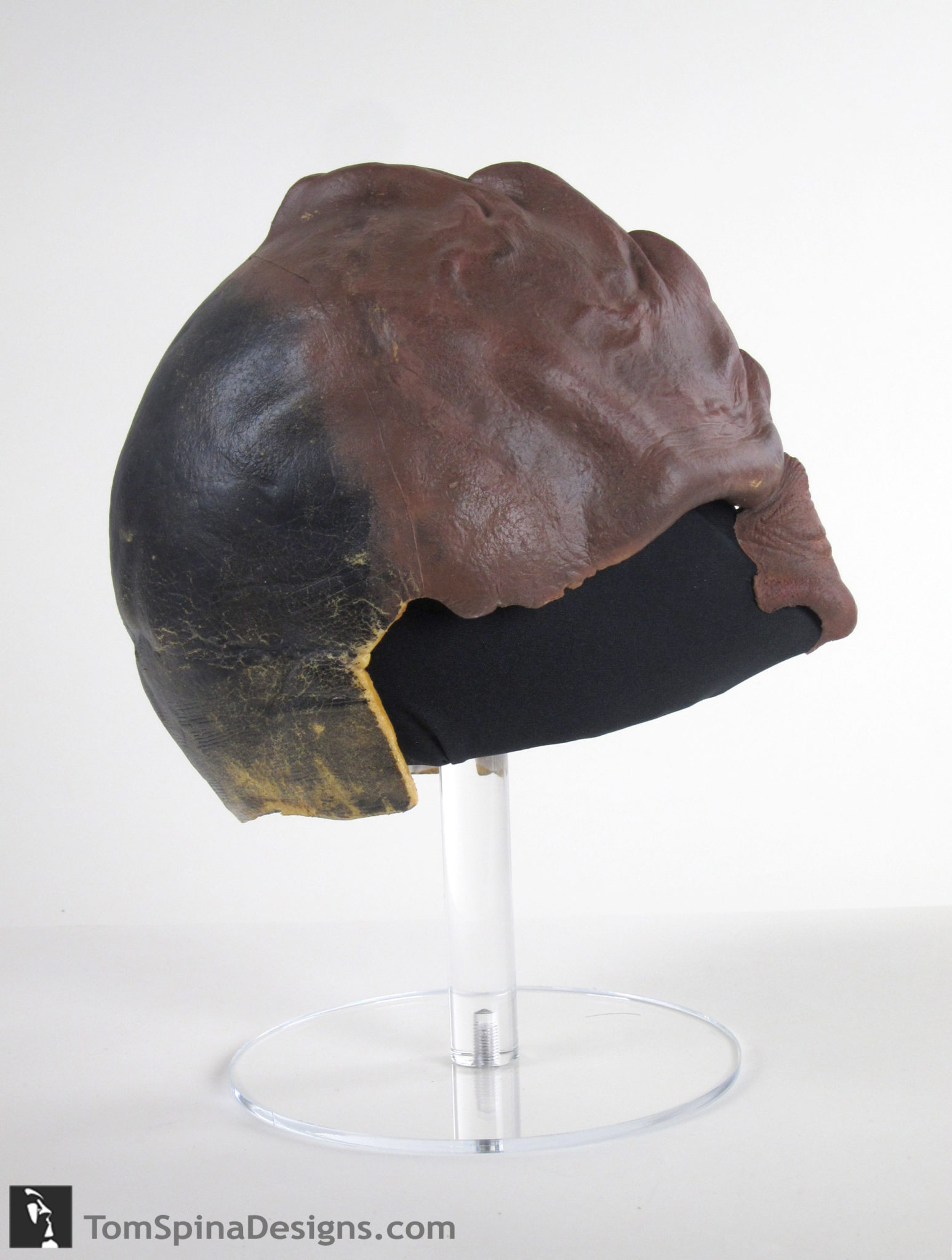
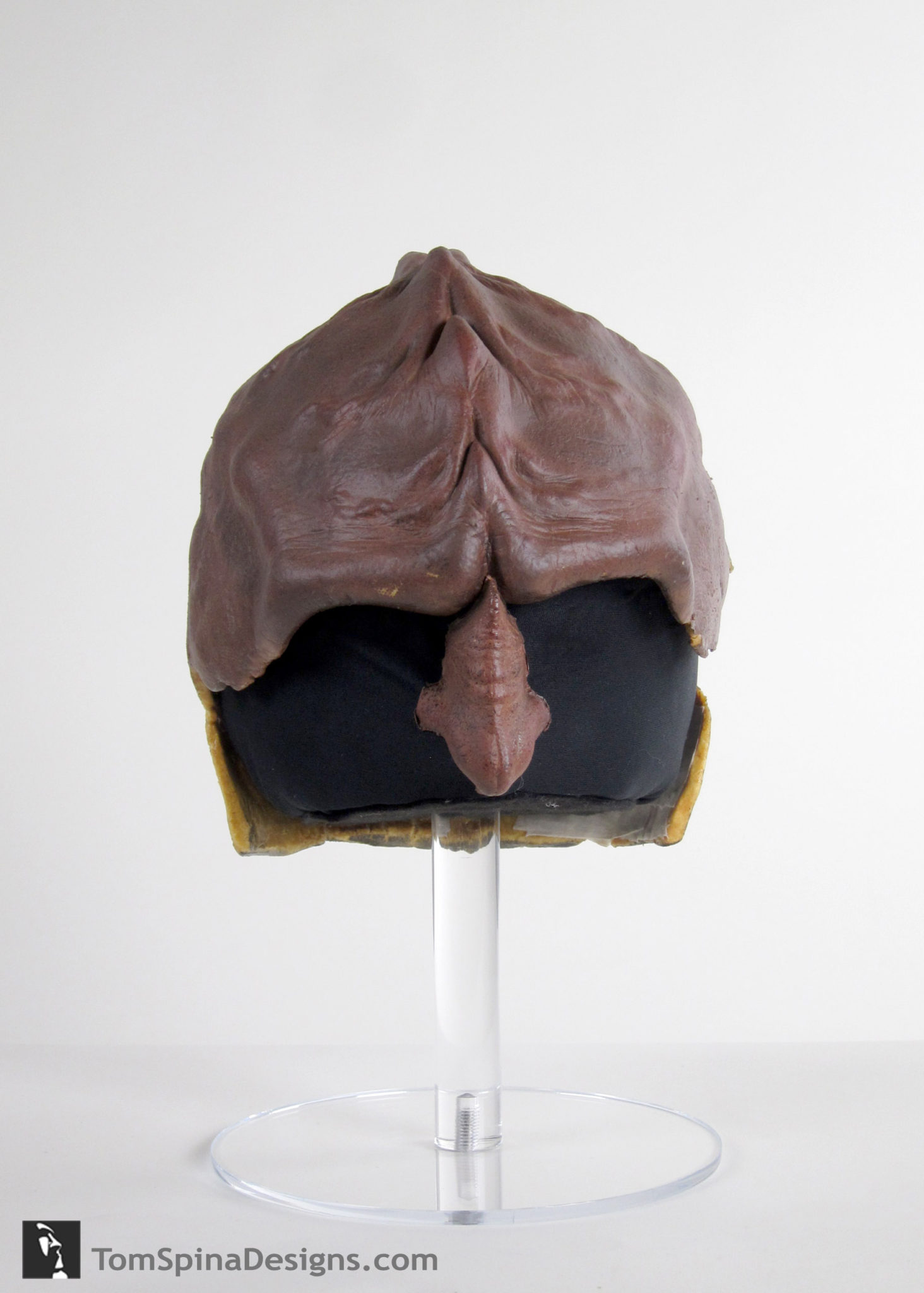
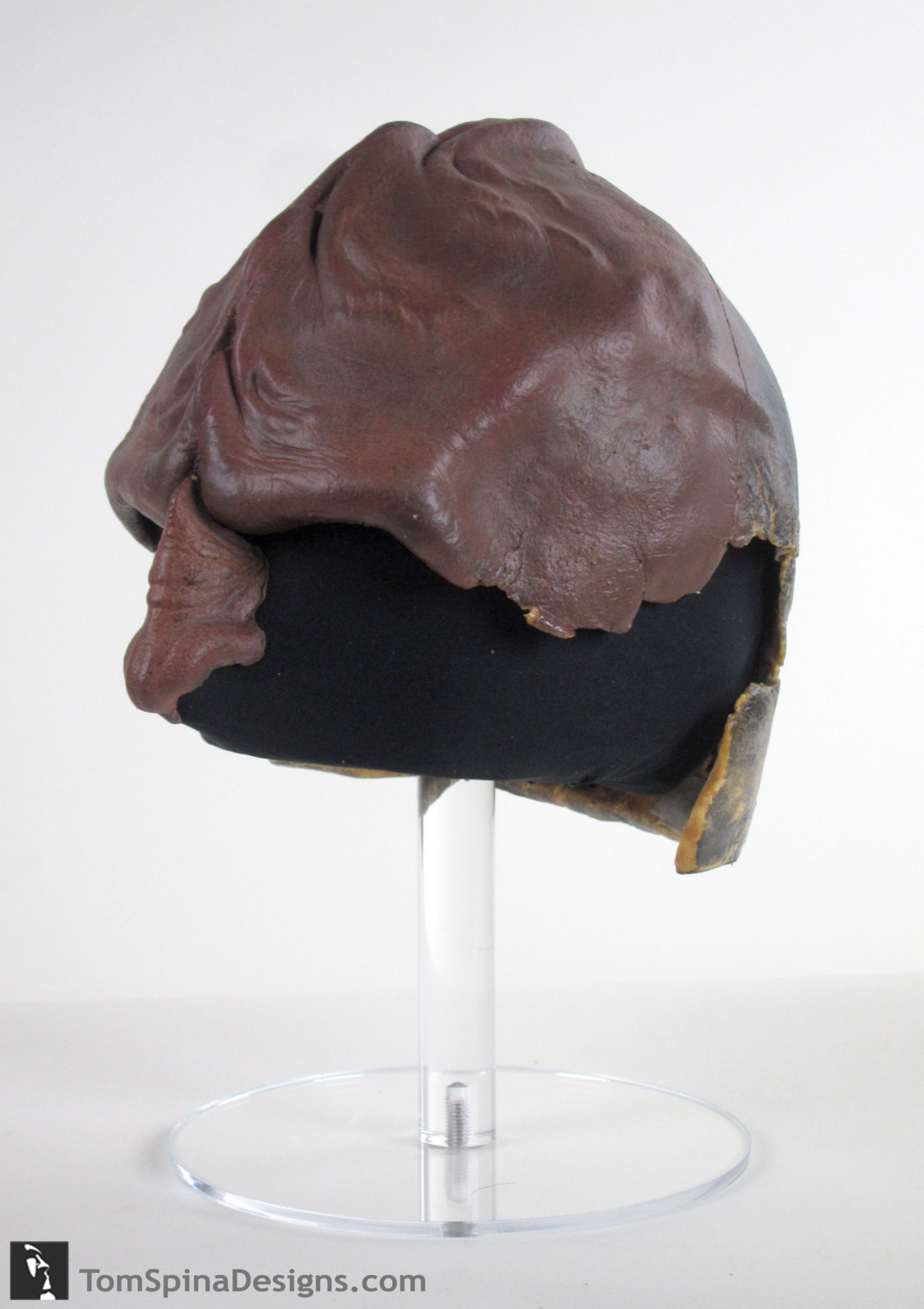
Westmore and his team created a different ridge pattern for every Klingon — a decision he would quickly regret:
It was the beginning of what I would eventually call “Klingon Hell”: the self-imposed task of sculpting a new and different head for virtually every Klingon actor.


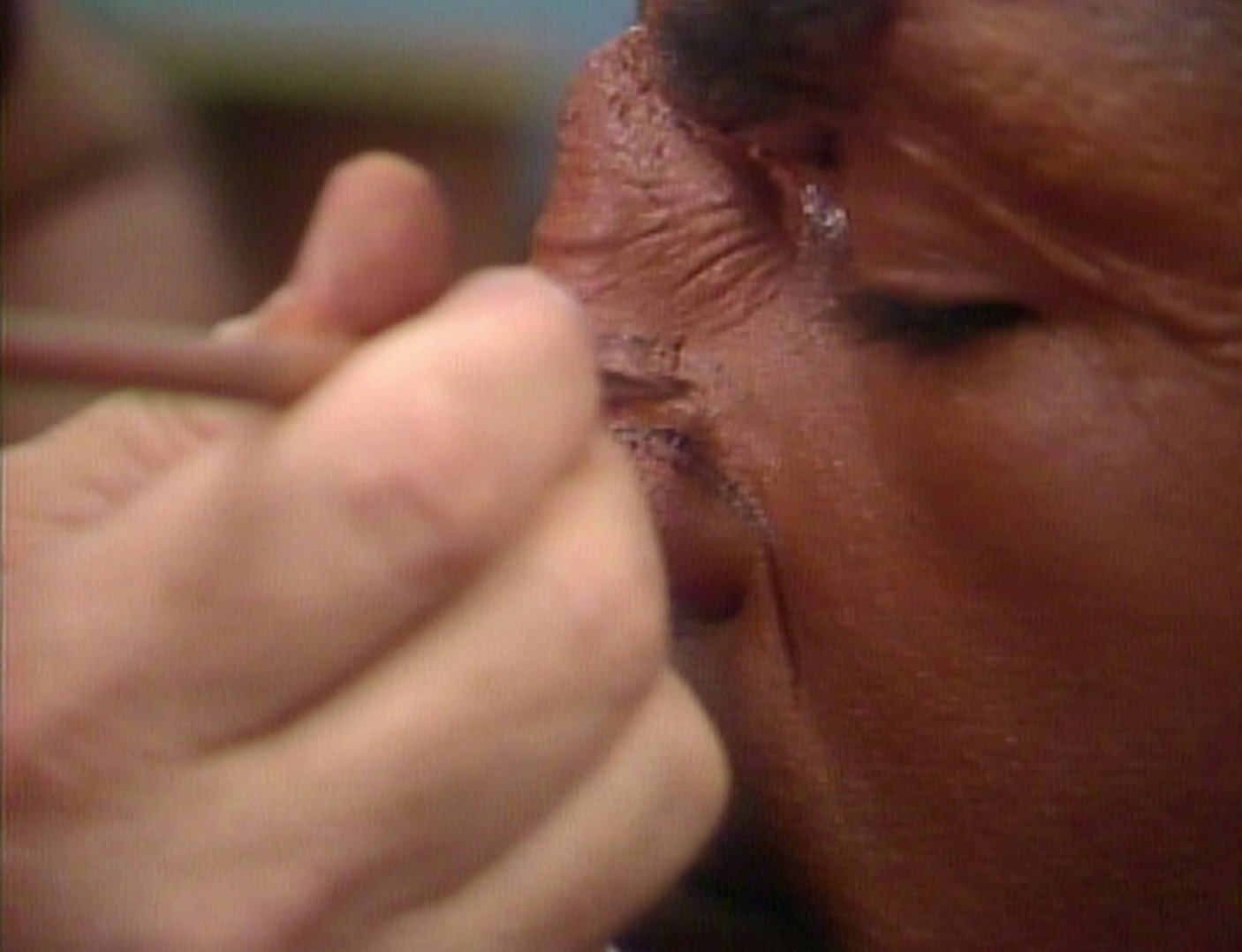

Passion
Maurice Hurley, the Season 1-2 producer who co-wrote “Heart of Glory”, believed the Klingons helped bring a sense of balance to the series. “The show gets so intellectually smug and self-serving,” Edward Gross and Mark A. Altman quote Hurley as saying in Captains’ Logs: The Unauthorized Complete Trek Voyages. “With the Klingons you’re dealing with emotion and passion,” and that’s something The Next Generation needed every now and then: “someone willing to storm the barricades.”
Ron Moore fleshed out these concept. His first script, “The Bonding”, was Moore’s ticket aboard the Star Trek staff.

“I didn’t start out with the intention of focusing on Worf,” he told Cinefantastique in 1990. But when Michael Piller, who had by then taken over from Hurley as producer asked him to combine two stories into a script that would become “Sins of the Father”, Moore had the chance to put his mark on Klingon culture.
“They had these real intricate codes of honor and poetry, like the samurai,” Moore told Star Trek: The Magazine years later.
They were also like the Vikings; they were big, brawling, larger than life, they liked to drink and sing big songs like the Vikings, or at least our conception of the Vikings. That was where I began with the culture.
Contradicting The Original Series, Moore insisted that Klingons weren’t “evil, tyrannical pirates bent only on pillage and plunder.”
They have a strict, almost unyielding code of ethics and honor and take their responsibilities as rulers seriously. … Klingons respect courage, strength and cunning, in that order … Klingons respect the declared war, the killing stroke, the blood feud, death in the field of battle and clear positions of hostility.

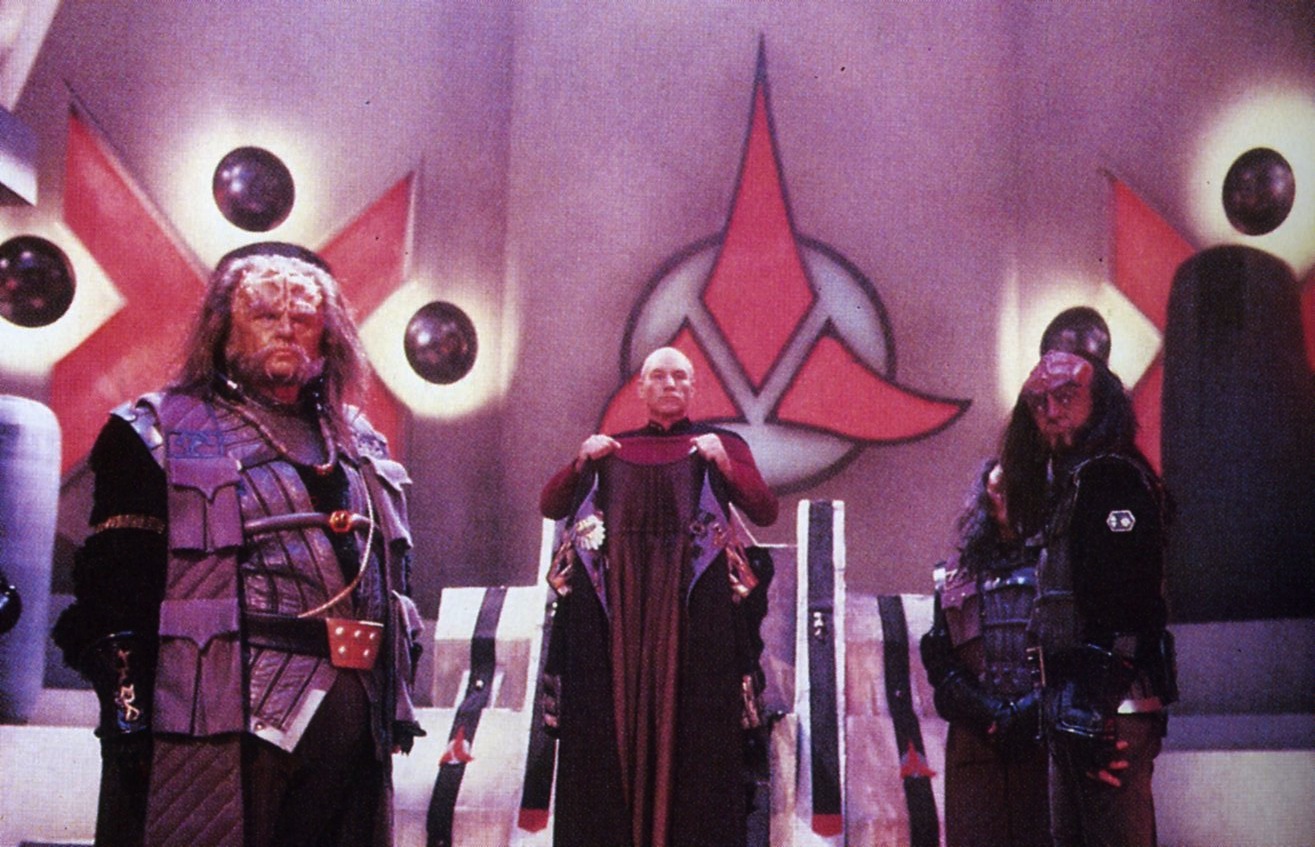
Moore also argued it was time to stop thinking about the Klingons as Star Trek’s version of the Soviet Union:
The place where the Russians were when I was doing the Klingon shows just wasn’t as relevant any more. The [Berlin] Wall had fallen and it was all about the collapse of this empire, and what they were going to do internally, and how do they become a democracy. I didn’t want to take the Klingons down that road, because it would have essentially defanged them, and I liked keeping them more dangerous.
One Russian influence remained: like the Communists who once governed the Soviet Union, the Klingon elite didn’t live up to its stated ideals.
That was one of the great contradictions of the empire; the society is built around a concept of being honorable, but those principles are often sacrificed and compromised by people like Duras.
Conspiracy, intrigue, larger-than-life personalities — the Klingons lend themselves to what Moore described as “Shakespearean” drama. “It made it more interesting if it wasn’t quite so clear whose side was right.”
Klingon women
The writers’ bible of The Original Series claimed the Klingons had “no patience with women, even their own, and treat them as sometime useful animals.”
“Dave of the Dove” had suggested that wasn’t entirely true. There were two women in Kang’s crew.
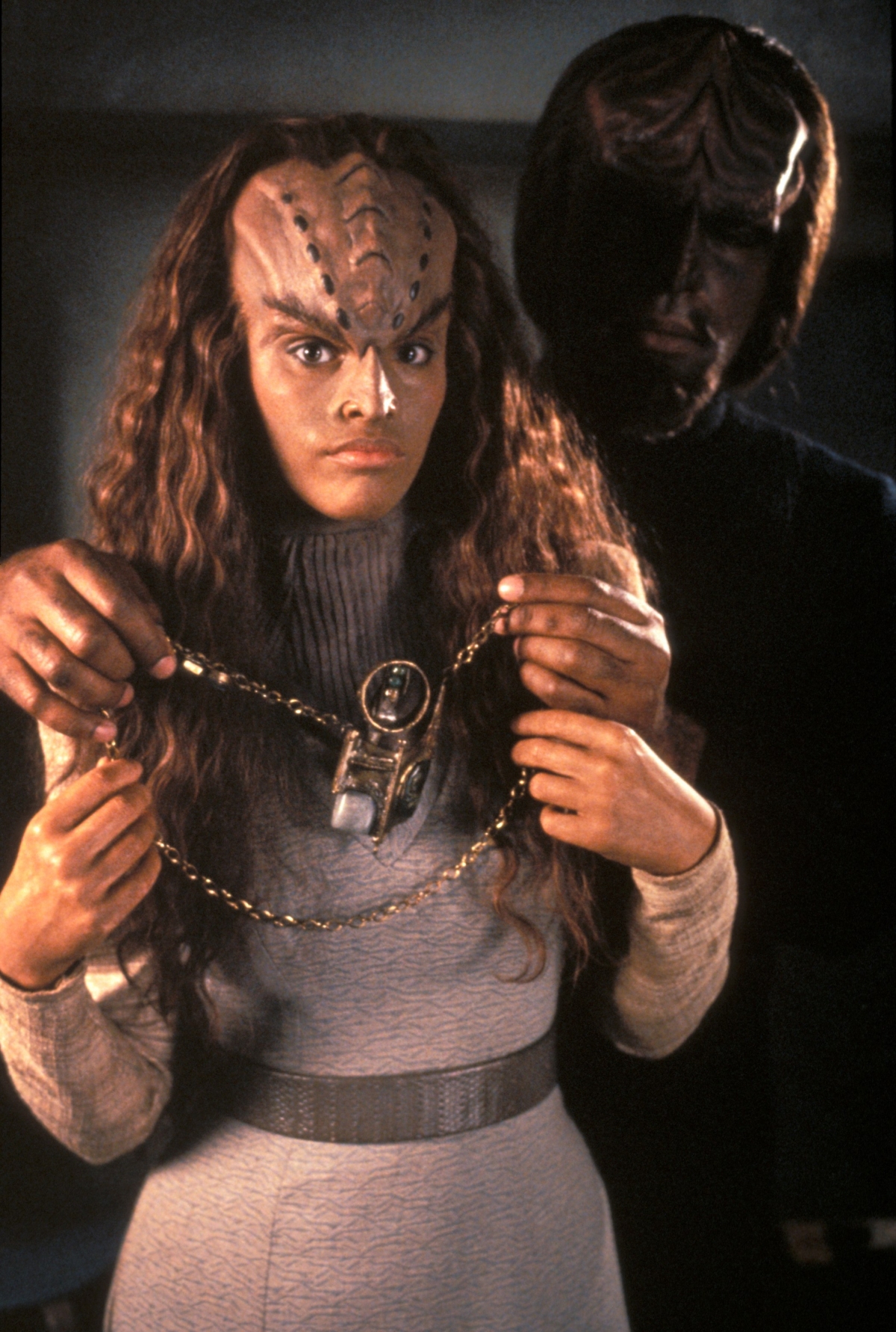
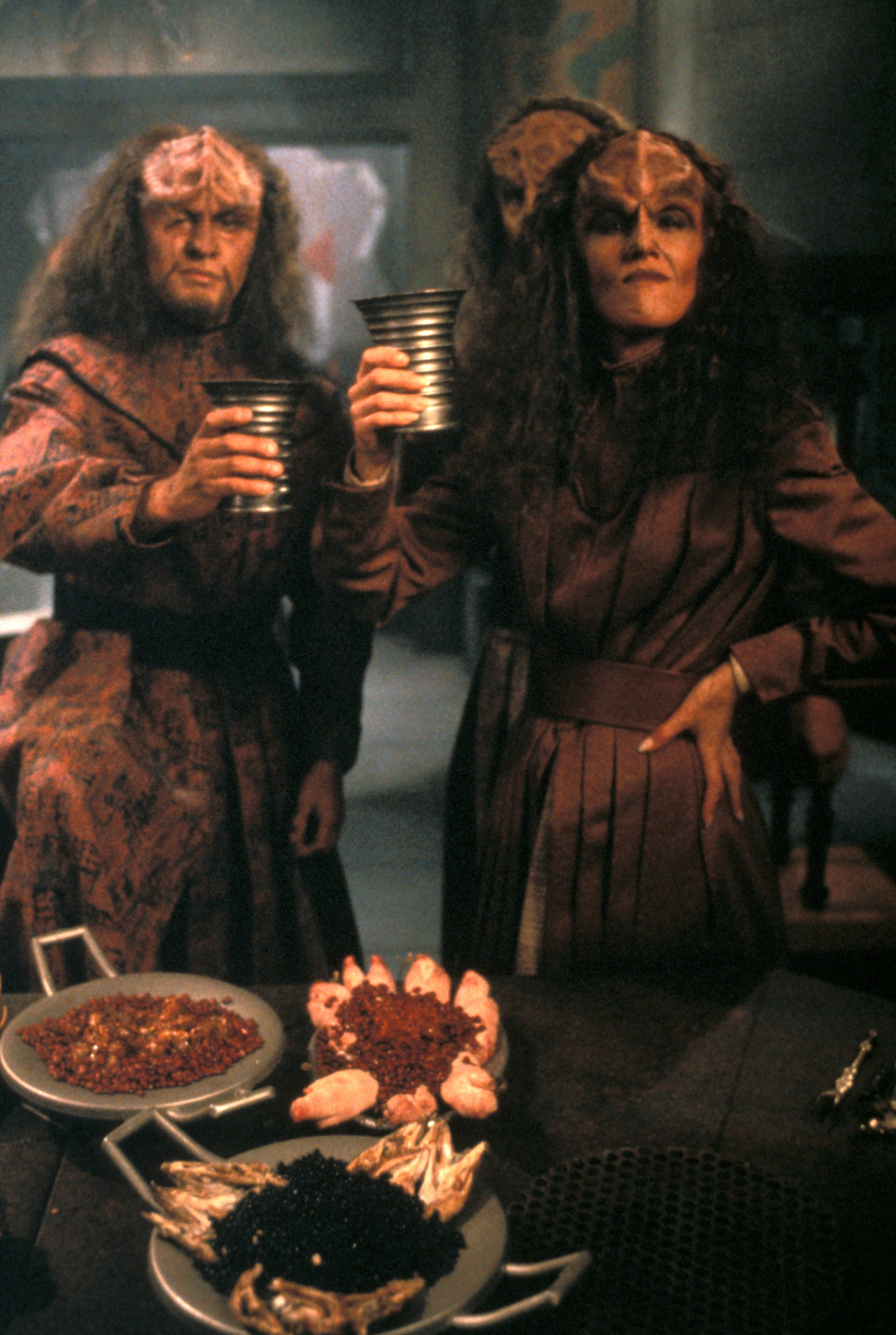
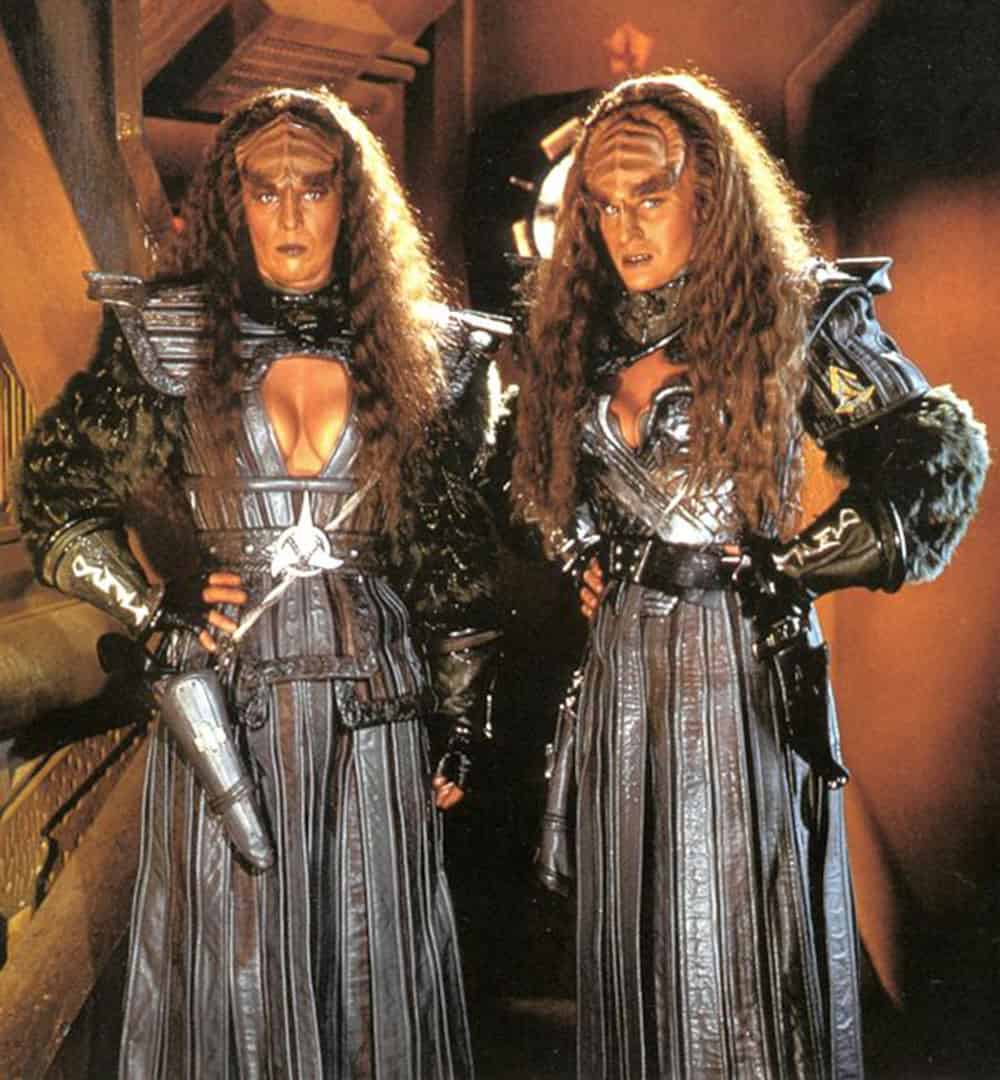
Moore established in “Redemption” that women were not allowed to serve on the Klingon High Council (although a female Klingon had been present in the Great Hall during “Sins of the Father”). It differentiated them from the Federation and the Romulans, he argued: Klingons were “a traditionally patriarchal society, even if many elements have disappeared with time.”
Indeed, from Kahlest (Thelma Lee), who calls the Klingon chancellor “fat” to his face, to Worf’s love interest K’Ehleyr (Suzie Plakson) to the Duras sisters (Barbara March and Gwynyth Walsh), none of the Klingon women of The Next Generation seemed particularly deferential to patriarchy.
Improved makeup
The appearance of ever more Klingons forced Westmore to give up his practice of creating a unique look for each one. “Instead of making a cast of each actor’s head,” he explains in Star Trek: The Next Generation Makeup FX Journal, “I would measure their head when they walked in the door.”
If their head size was close to that of a preexisting mold, we would create our new design on an available head mold. Quite often, if we had two actors with similarly-sized heads, I would sculpt the first forehead design and after taking a mold from it, the clay sculpture would still be intact. This would eliminate the need for “basing it up”; the process of putting the clay on the mold.
Rather than spend a whole day on a new sculpture, Westmore would be able to resculpt the second head design in three or four hours.
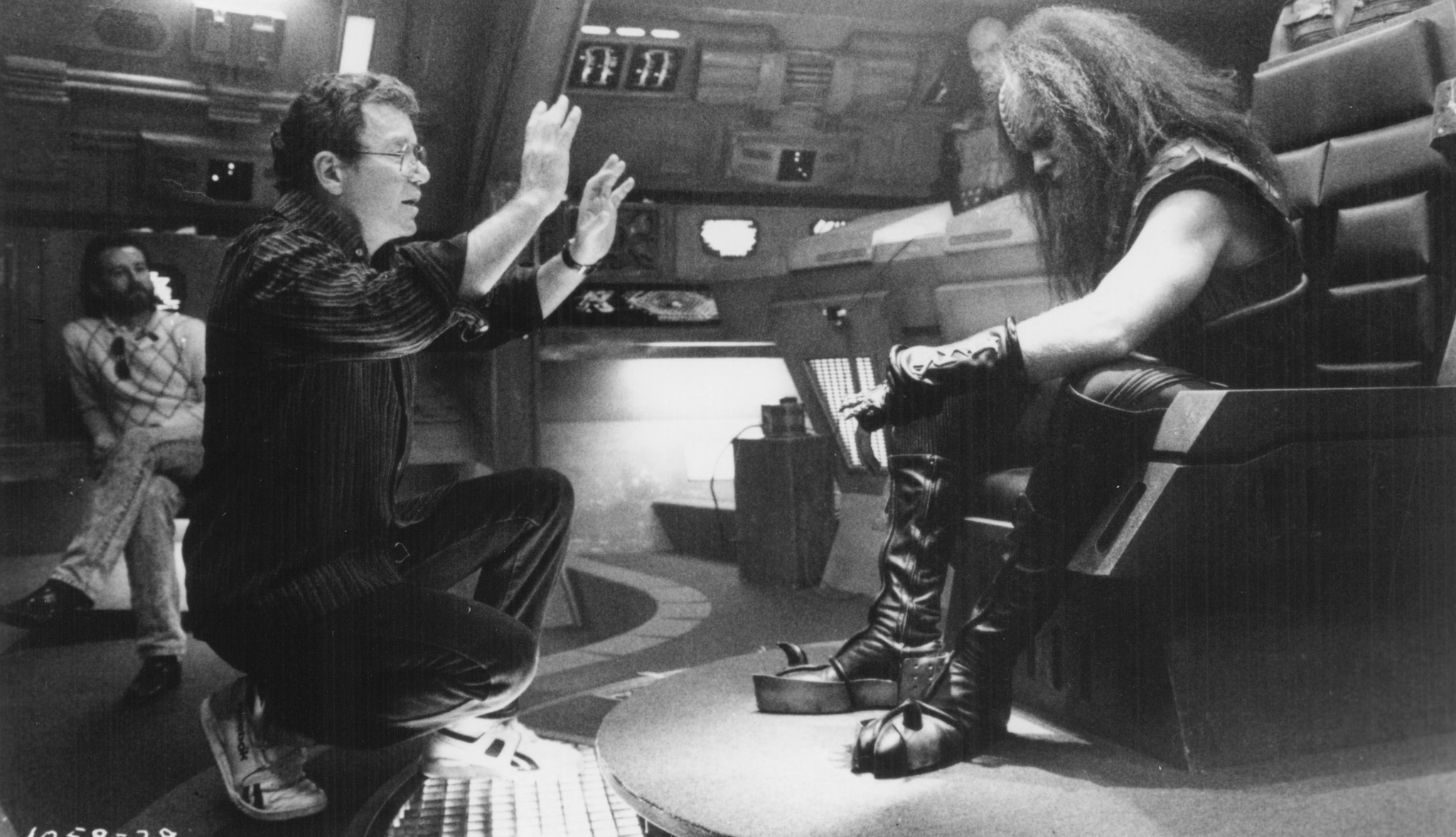

William Shatner gave Westmore’s counterpart on the fifth Star Trek motion picture, Richard Snell, leeway to experiment with different forehead designs. “I always felt that their foreheads should be like a thumbprint,” Snell told Cinefantastique, “and on V, Shatner said, ‘Go ahead, make ’em different.’ I thank him for that. That opened the door and now the sky’s the limit.”
Michael J. Mills, one of Snell’s makeup artists, recalled in a 1992 interview with Cinefex that Nicholas Meyer gave slightly stricer instructions on Star Trek VI: “He wanted the audience to watch the actors’ faces and not be distracted by the makeups. So every one had to be a custom job – which translated out to be about three-and-a-half hours.”
Deep Space Nine

When Moore transitioned from The Next Generation to Deep Space Nine, he felt Klingon culture had been established well enough to poke some fun at it. “This is a point where you’re saying they are kind of silly,” he told Star Trek: The Magazine in 2000. “Let’s enjoy that and laugh at them. Not make them look like fools, but let’s not kid ourselves; they do some pretty crazy stuff.” The Klingons of Deep Space Nine were rambunctious, but the Dominion War arc also gave them the chance to prove that they really were brave warriors.
In an attempt to persuade more Next Generation viewers to switch to Deep Space Nine, Michael Dorn joined the third series in its fourth season. “The Way of the Warrior” put Worf and the Klingons front and center.
The writers initially toyed with a Vulcan exit from the Federation, but Ira Steven Behr suggested it should be the Klingons who break off diplomatic relations. “That might have more heat to it.” Rick Berman loved the idea.
So did Dorn, who told Jeanne M. Dillard for the book Star Trek – Where No One Has Gone Before that allowing the Federation and Klingons to be at war again “makes the Klingon characters what they were originally created to be.”
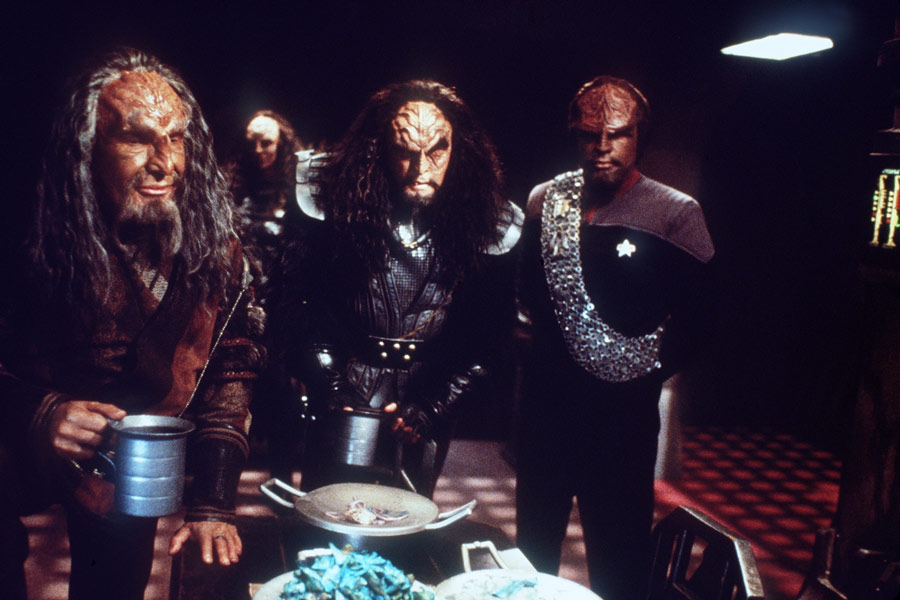
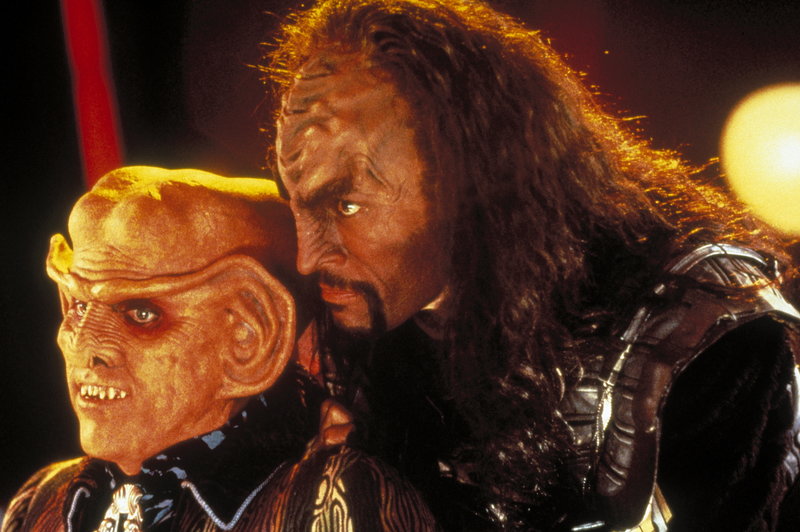
“Trials and Tribble-ations” forced Deep Space Nine to reckon with the still-unresolved issue of the Klingons’ changed appearance from The Original Series. But even Moore, who created so much of Klingon culture, couldn’t think of a simple way to explain the discrepancy.
So we just said, “Just have Worf say it’s a long story and leave it at that, you know? And that’s fine.” And it’s a wink and a nod to the audience, like, “Okay, we know this doesn’t make sense. Just go with us, okay?”
Judith and Garfield Reeves-Stevens ultimately came up with an explanation for Star Trek: Enterprise: in an attempt to create a biological weapon, Klingon sciencists inadvertently unleashed a virus that smoothened out the Klingon forehead.
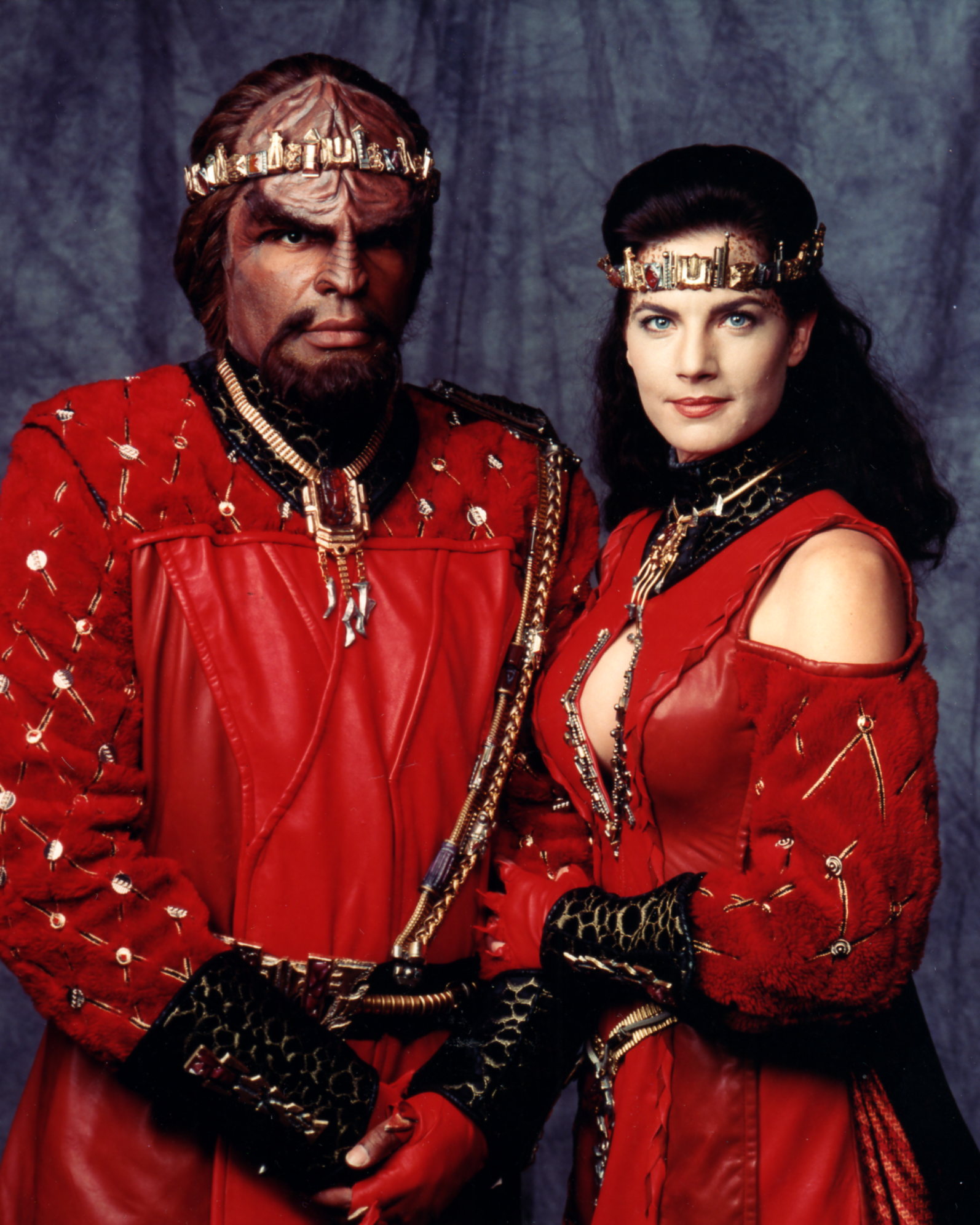
Moore did rethink the limited role of Klingon women. While writing “You Are Cordially Invited”, in which Worf would marry Jadzia Dax (Terry Farrell), he realized he had done Klingon woman a “disservice” by not allowing them to get involved in politics. “The fallout from [that] was that the role of Klingon women got much smaller, and I hadn’t intended to do that,” he told the Star Trek: Deep Space Nine Companion.
So I figured that if men run the Council and rule the houses, maybe women rule the social structure, and within that structure the mistress of a great house wields pretty much unchallenged power.
Moore barely got a chance to write Star Trek’s most prominent female (half-)Klingon: B’Elanna Torres (Roxann Dawson). He transferred to Voyager after Deep Space Nine ended in 1999, but quit within weeks when he fell out with Producer Brannon Braga. He was able to write “Barge of the Dead” before he left, which revealed the Klingon version of Hell.
